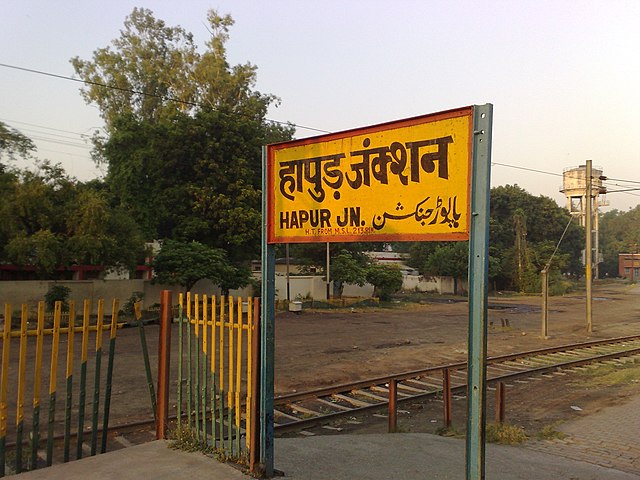In linguistics, diglossia is a situation in which two dialects or languages are used by a single language community. In addition to the community's everyday or vernacular language variety, a second, highly codified lect is used in certain situations such as literature, formal education, or other specific settings, but not used normally for ordinary conversation. The H variety may have no native speakers within the community. In cases of three dialects, the term triglossia is used. When referring to two writing systems coexisting for a single language, the term digraphia is used.
The station board of Hapur Junction railway station in Northern India. Digraphia is present between the two formal registers of a common vernacular, Hindustani, which is an example of triglossia.
Vernacular is the ordinary, informal, spoken form of language, particularly when perceived as being of lower social status in contrast to standard language, which is more codified, institutional, literary, or formal. More narrowly, a particular variety of a language that meets the lower-status perception, and sometimes even carries social stigma, is also called a vernacular, vernacular dialect, nonstandard dialect, etc. and is typically its speakers' native variety. Despite any such stigma, modern linguistics regards all nonstandard dialects as grammatically full-fledged varieties of a language.
The oldest known vernacular manuscript in Scanian (Danish, c. 1250). It deals with Scanian and Scanian Ecclesiastical Law.
An allegory of rhetoric and arithmetic, Trinci Palace, Foligno, Italy, by Gentile da Fabriano, who lived in the era of Italian language standardization
Allegory of Dante Alighieri, champion of the use of vernacular Italian for literature rather than the lingua franca, Latin. Fresco by Luca Signorelli in the cappella di San Brizio dome, Orvieto




